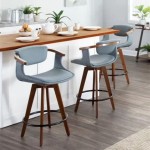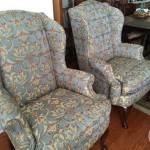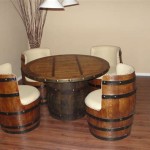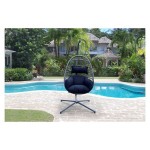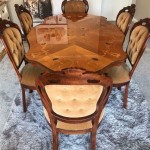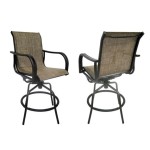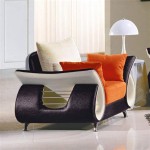Painting A Kitchen Table And Chairs: A Comprehensive Guide
Painting a kitchen table and chairs is a cost-effective and relatively simple method to refresh the look of a kitchen or dining area. Whether aiming to update the color scheme, repair worn surfaces, or simply add a personal touch to existing furniture, a well-executed paint job can dramatically transform the pieces. This article provides a detailed guide to painting a kitchen table and chairs, covering everything from preparation to finishing touches, ensuring a professional-looking and durable result.
Before commencing any painting project, thorough preparation is crucial. This phase impacts the adherence of the paint, the smoothness of the finish, and the overall longevity of the completed project. Ignoring or rushing through preparation often leads to unsatisfactory results, such as peeling paint, uneven coverage, and visible imperfections.
Primarily, the existing surface must be inspected. Identify any damages like scratches, dents, or loose joints in the table and chairs. Addressing these issues before priming and painting will significantly improve the final product. Use wood filler for dents and scratches, tightening loose screws or using wood glue for wobbly joints.
Next, the furniture must be thoroughly cleaned. Begin by wiping down the table and chairs with a damp cloth to remove loose dust and debris. For greasy or oily surfaces, use a degreasing cleaner or a mixture of warm water and dish soap. Rinse the surfaces thoroughly with clean water and allow them to dry completely before proceeding.
Sanding is a critical step in preparing the surface for paint. Sanding creates a slightly rough texture, providing a better grip for the primer and paint. A medium-grit sandpaper (around 120-grit) is generally suitable for removing existing finishes and smoothing out imperfections. Apply even pressure and sand in the direction of the wood grain. For surfaces with a glossy finish, a coarser grit sandpaper (around 80-grit) may be necessary to initially break down the sheen. After the initial sanding, switch to a finer grit sandpaper (around 220-grit) to smooth the surface further.
After sanding, remove all sanding dust. Use a vacuum cleaner with a brush attachment to remove the bulk of the dust. Then, wipe down the surfaces with a tack cloth. A tack cloth is a slightly sticky cloth that effectively picks up any remaining dust particles. This step is essential for achieving a smooth and even paint finish.
Once the surface is clean and sanded, apply a suitable primer. Primer serves several purposes, including sealing the surface, providing a uniform base for the paint, and improving the adhesion of the paint. Choose a primer specifically designed for the material of your table and chairs (e.g., wood primer, metal primer). Apply the primer in thin, even coats, using a brush, roller, or spray gun. Allow the primer to dry completely according to the manufacturer’s instructions. Lightly sand the primed surface with fine-grit sandpaper (around 320-grit) to remove any imperfections and create an even smoother surface. Wipe away any sanding dust before proceeding with the paint.
Key Point 1: Selecting the Right Materials
The selection of appropriate materials directly influences the outcome and durability of the painted kitchen table and chairs. Choosing quality paint, brushes, and other supplies is paramount for achieving a professional and lasting finish.
The type of paint is a primary consideration. Latex (water-based) paints are a popular choice for furniture due to their low odor, easy cleanup, and quick drying time. They are also generally more environmentally friendly than oil-based paints. However, oil-based paints offer superior durability and a smoother finish, making them a suitable option for high-use surfaces. Alkyd paints, a type of oil-based paint, are known for their hardness and resistance to scratches and chips. Consider the usage and wear and tear the furniture will experience when selecting the paint type. For instance, a table used daily for meals would benefit from the increased durability of an oil-based or alkyd paint.
The paint sheen also affects the appearance and durability of the finish. Matte or flat sheens offer a low-luster finish that hides imperfections well. However, they are less durable and more difficult to clean. Eggshell and satin sheens provide a slightly greater degree of sheen and are more durable and easier to clean than matte finishes. Semi-gloss and gloss sheens offer the highest degree of sheen and are the most durable and easiest to clean. These sheens are often used for surfaces that require frequent cleaning, such as table tops. Determine the desired aesthetic and the level of durability required to select the appropriate sheen.
Choosing the right brushes and rollers is also important for achieving a smooth and even paint finish. High-quality brushes with synthetic bristles are generally recommended for latex paints. Natural bristle brushes are better suited for oil-based paints. Select brushes of appropriate sizes for the different areas of the furniture. Smaller brushes are useful for detail work and tight corners, while larger brushes are suitable for covering larger surfaces. Foam rollers can be used to apply paint to flat surfaces, providing a smooth and even finish. Ensure the roller nap is appropriate for the type of paint being used.
In addition to paint, brushes, and rollers, other essential materials include paint thinner or mineral spirits (for cleaning oil-based paints), painter’s tape (for masking off areas), drop cloths (to protect the work area), and safety glasses and a respirator (for personal protection).
Key Point 2: Painting Techniques for a Professional Finish
The application of paint significantly impacts the final appearance of the furniture. Employing proper painting techniques can help to achieve a smooth, even, and professional-looking finish.
Before commencing painting, protect the work area with drop cloths to prevent paint splatters and spills. Mask off any areas that should not be painted, such as hardware or decorative elements, using painter’s tape. Ensure the tape is applied firmly to prevent paint from bleeding underneath.
Apply the paint in thin, even coats. Avoid applying thick coats of paint, as this can lead to drips, runs, and uneven drying. Apply the paint in the direction of the wood grain, using smooth and consistent strokes. When using a brush, hold it at a slight angle and apply even pressure. When using a roller, overlap each stroke slightly to ensure complete coverage. Allow each coat of paint to dry completely according to the manufacturer’s instructions before applying the next coat.
Sanding between coats of paint is crucial for achieving a smooth finish. After each coat of paint has dried, lightly sand the surface with fine-grit sandpaper (around 320-grit or higher). This will remove any imperfections, such as brush strokes or dust particles, and create a smoother surface for the next coat of paint. Wipe away any sanding dust before applying the next coat of paint.
For intricate areas or details, use a small brush to apply the paint carefully. Avoid applying too much paint to these areas, as this can lead to drips and runs. Use a dry brush to feather out any excess paint and blend it into the surrounding area.
If using a spray gun to apply the paint, ensure the gun is properly adjusted and the paint is thinned appropriately. Apply the paint in thin, even coats, holding the gun at a consistent distance from the surface. Overlap each stroke slightly to ensure complete coverage. Wear a respirator when using a spray gun to protect against inhaling paint fumes.
Key Point 3: Sealing and Protecting the Painted Surface
Once the paint has dried completely, applying a protective sealant is recommended to enhance the durability of the finish and protect it from scratches, chips, and stains. A sealant, also known as a topcoat, can significantly extend the lifespan of the painted kitchen table and chairs.
Several types of sealants are available, each with its own advantages and disadvantages. Polyurethane is a popular choice for furniture due to its durability and resistance to water and chemicals. It is available in both oil-based and water-based formulations. Water-based polyurethane is less durable than oil-based polyurethane but is easier to clean and has a lower odor. Polyacrylic is another water-based sealant that is more resistant to yellowing than polyurethane, making it a good choice for light-colored paints. Wax is a natural sealant that provides a soft, matte finish. It is less durable than polyurethane or polyacrylic but is easier to apply and repair.
Before applying the sealant, ensure the painted surface is clean and dry. Lightly sand the surface with fine-grit sandpaper (around 400-grit) to create a slightly rough texture for better adhesion. Wipe away any sanding dust before proceeding. Apply the sealant in thin, even coats, using a brush, roller, or spray gun. Follow the manufacturer’s instructions for drying time and application methods. Multiple thin coats are generally better than one thick coat, as thick coats can lead to drips and runs.
Allow the sealant to dry completely according to the manufacturer’s instructions. Lightly sand the sealed surface with fine-grit sandpaper (around 400-grit or higher) to remove any imperfections. Wipe away any sanding dust before applying the final coat of sealant. Apply a final coat of sealant to provide maximum protection. Allow the sealant to cure completely before using the furniture. Curing time can vary depending on the type of sealant used, but it is generally recommended to wait at least 24-48 hours before using the furniture.
Once the sealant has cured, inspect the furniture for any imperfections. Touch up any areas that need additional attention with a small brush and the appropriate paint color. Apply a final coat of sealant to the touched-up areas. Clean the brushes, rollers, and spray gun thoroughly after use. Dispose of any leftover paint and sealant properly. By following these steps, the kitchen table and chairs will have a durable, attractive finish that will last for years to come.

Antique Dining Table Updated With Chalk Paint Anderson Grant

The Best Way To Paint A Dining Table And Chairs Confessions Of Serial Do It Yourselfer

Kitchen Table Makeover Using Chalk Paint And Wood Stain Love Our Real Life

Inspirations Dining Table And Chairs Make Over

How To Paint A Dining Table 3 Minute Makeover

Painting Kitchen Tables S Ideas Tips From Hgtv

How To Refinish A Table Sand And Sisal

Painting A Dining Table Black Youtube

How To Save Tired Dining Room Chairs With Chalk Paint Right Now

How To Paint A Kitchen Table Confessions Of Serial Do It Yourselfer
